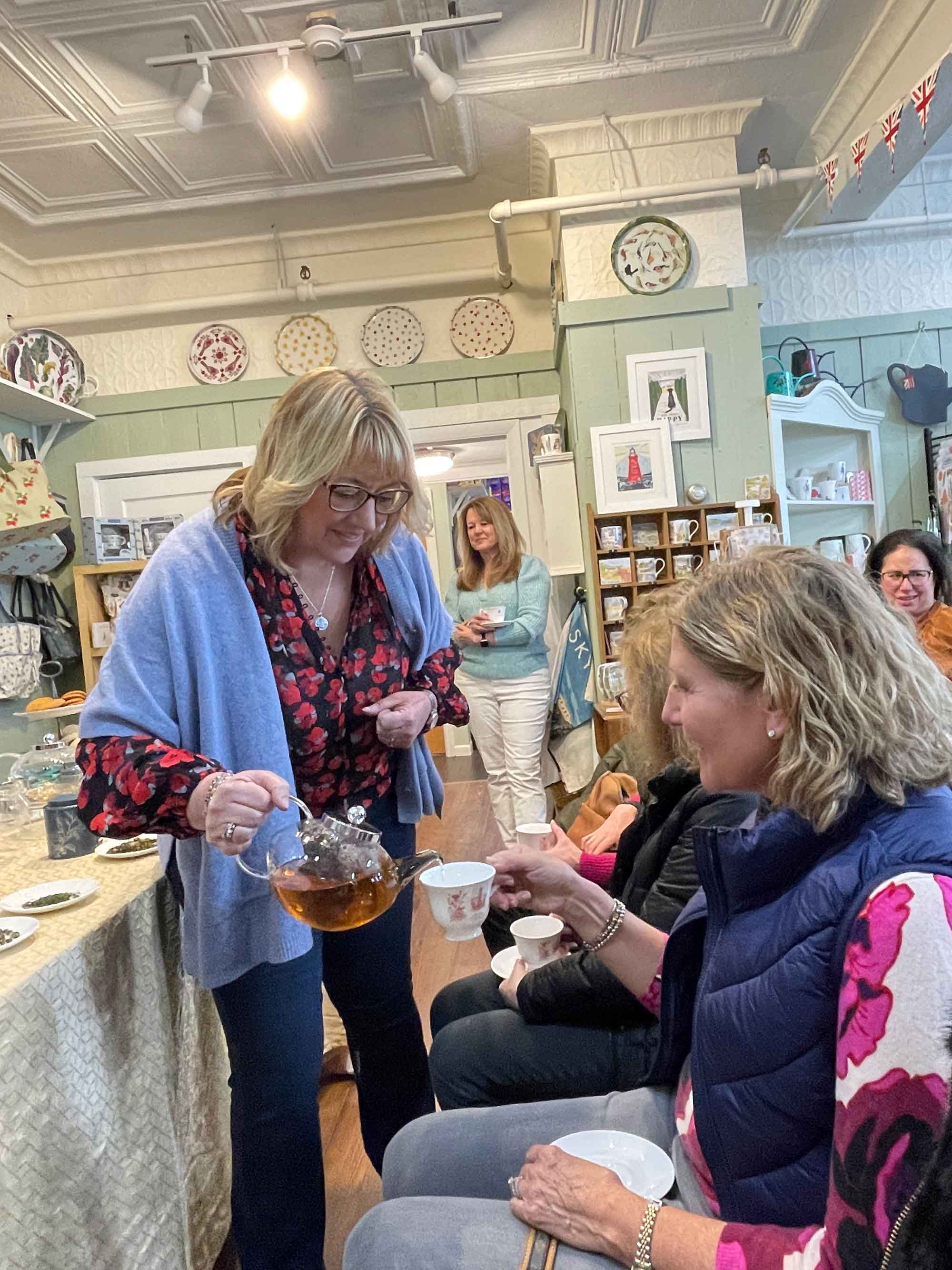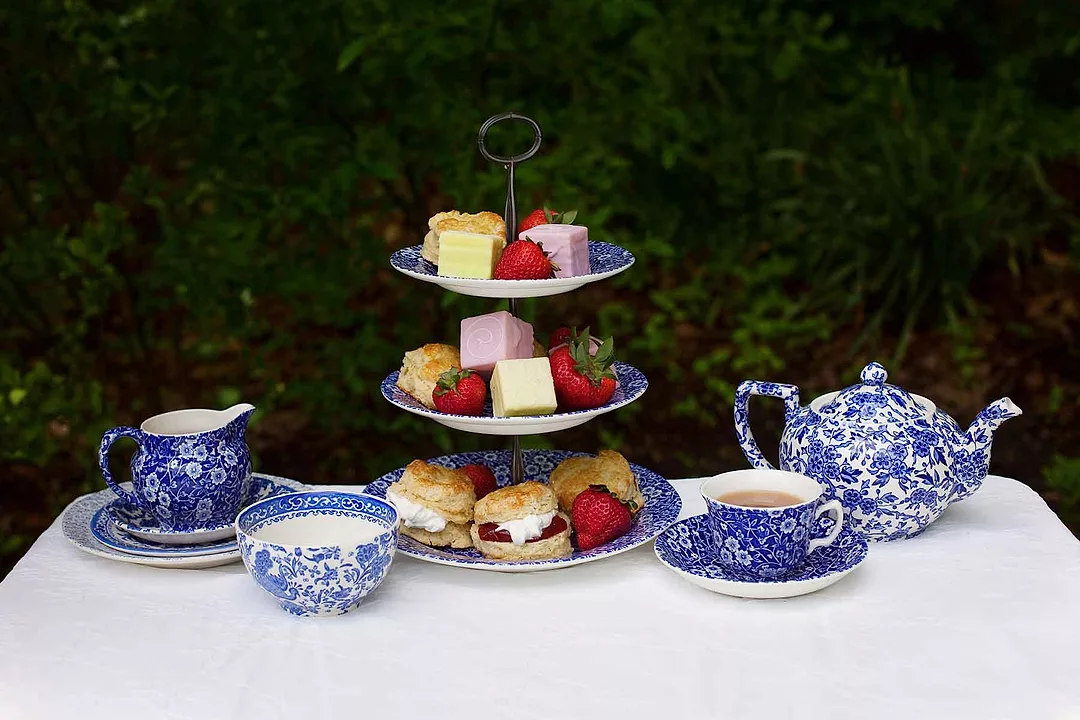Tea’s association with Great Britain began in the 17th-century when it was introduced to British society by Portuguese and Dutch traders. Initially, it was considered a luxury item, affordable only to the elite. However, the British East India Company’s monopoly on tea trade and the subsequent expansion of tea cultivation in British colonies like India and Sri Lanka, made tea more accessible to the masses. By the 18th century, tea had become a staple of British culture, with afternoon tea rituals and tea parties becoming commonplace across the country. Today, tea remains a symbol of hospitality, comfort, and tradition in Britain. Many Americans have adopted the garden tea party as well – particularly when the weather is beautiful as it is in summer!
Why not try your hand at a garden tea party with friends? If you are wondering how to begin, The Bee’s Knees British Imports at 566 Massachusetts Ave. in Acton has put together this easy guide to help you elevate your tea-drinking experience to new heights. Whether you prefer the briskness of black tea, the subtlety of green tea, the delicate flavors of white tea, or the soothing warmth of herbal infusions, here’s a guide to help you prepare the perfect “cuppa.”
Firstly, start with quality ingredients. The type and quality of tea you choose greatly influence the final brew. Loose leaf tea allows the leaves to fully expand and release their flavors. If tea bags are your choice, ensure they’re made of whole tea leaves.

Whittard Tea, A British favorite
| Courtesy of Whittard TeaAs a general guideline, use one teaspoon of loose-leaf tea or one tea bag per cup (8 ounces) of water. Adjust the quantity based on personal preference and the strength of flavor desired.
Next, water temperature plays a crucial role in brewing tea. Different types of tea require different temperatures for the best infusion. Boiling water is suitable for black teas and herbal blends, while green teas and delicate white teas should be brewed with water just below boiling to avoid bitterness. An electric kettle with temperature control can help you master this delicate balance.

Lucinda serves students at a Master Class on brewing tea
| ©Voyager PublishingThe steeping time is another critical factor. Over-steeping can lead to a bitter taste, while under-steeping might result in a weak brew. Generally, black teas require 3-5 minutes, green teas 2-3 minutes, white teas 4-6 minutes, and herbal teas 5-7 minutes. A lid or a tea cozy can help maintain the ideal temperature throughout the brewing process. Once the tea is brewed to perfection, remove the leaves or tea bags promptly to prevent over-extraction. Leaving them in the water can result in a bitter or astringent taste.
If you have questions about brewing the proper cup of tea, or are wondering where to find high quality teas, the perfect table setting, or British treats to accompany your summertime tea party, the ladies at The Bee’s Knees British Imports would love to help – Lucinda might even share her recipe for sausage rolls if you ask her! Cheers!
This article was made possible through the support of The Bee’s Knees British Imports


